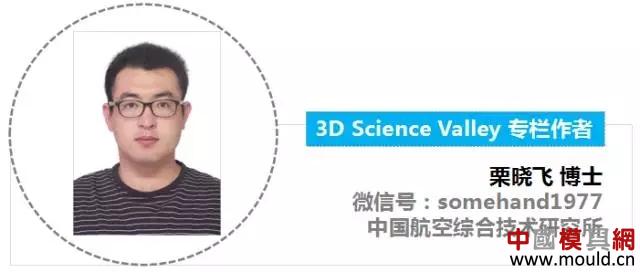Additive manufacturing technology is gradually integrated into the existing industrial system with its unique forming methods and technological advantages. It integrates and complements traditional material reduction and iso-material manufacturing technologies and becomes an irreplaceable part of the future industrial manufacturing field. Additive manufacturing technology is based on the principle of discrete-stacking. It is driven by three-dimensional data of parts and directly manufactures parts through raw materials (powders, wires, liquids, etc.), so that parts of any complex shape can be quickly and accurately manufactured on a single device. Parts "free manufacturing" solved the formation of many complex structural parts, and greatly reduced the number of machining operations and cycle times. And the more complex the product structure, the more pronounced the effect of its manufacturing speed. For a long time, under the traditional manufacturing technology conditions, parts procurement and acceptance have formed a complete set of technical requirements and acceptance methods, but these are based on the requirements of traditional technology on the geometric dimensions, surface roughness, manufacturing processes, etc. , and can not be fully applied to the relevant requirements of the procurement of additive manufacturing technology products. In view of the characteristics of additive manufacturing technology, the main considerations in the procurement of its parts include: part geometry; dimensional tolerances; surface topography; part construction orientation; parts production raw materials; parts repair; acceptable defects or deviations; Process quality control information, etc. 1, part geometry The part dimension and shape information generally includes engineering drawings, digital files, etc. The parts are fully defined, and the provided digital files (including the 3D model or part geometry information) should be compatible within both the supplier and the buyer's systems. 2, size tolerance Additive manufacturing technology due to its special manufacturing process and lower process constraints, in the final part of the dimensional tolerances should have special requirements. In the functional area (for example, machining needs to leave a machining allowance area) and non-functional areas (for example, only used for aesthetic or decorative areas), the dimensional tolerance requirements are different and need to be clearly stated at the time of purchase. In general, the general tolerances should comply with ISO 2768-1 and ISO 2768-2. 3, surface morphology When ordering a purchase, the surface topography of the additive-manufactured part should be specified, for example, by reference to the existing standard ISO 1302 or ISO 25178. The surface topography requirements can be created by specifying the surface roughness or wave form of the entire part or critical part. 4, parts construction orientation Differences in the orientation of the parts will directly affect the final performance of the part. Therefore, at the time of purchase, the part construction orientation and the corresponding manufacturing process should be specified. A representation of the build orientation can be found in ISO/ASTM 52921. 5. Raw materials for parts production The quality and status of raw materials directly affect the quality of the final part. Therefore, in the purchase order should indicate the requirements for raw materials, including chemical composition, raw material properties, storage status, process requirements. When necessary, the requirements for repeated reuse of raw materials should also be regulated accordingly. 6, parts repair The requirements for the repair of additive-produced parts shall be determined through consultation between the supplier and the buyer. When the purchase order is made, the approved repair method shall be marked, and the repair conditions shall be specified and approved by the demander. 7, acceptable defects or deviations According to different use environments and technical requirements, and based on the current lack of general status of defect characterization and determination, the allowable defects of additive-produced parts shall be negotiated between the supplier and the buyer, including the internal cracks, defects, and discontinuities. Impurities, inclusions, contaminants, porosity, etc. 8, process quality control information When ordering purchases, the purchaser should specify the relevant requirements for the process quality control information in the additive manufacturing process, including the process specifications, evaluation methods, etc., in order to ensure the reproducibility of the process. At the same time, the retention period of the record documents of these information shall be negotiated between the supplier and the buyer for future reference. When parts are purchased, the relevant requirements for packaging, transportation, storage, etc. of the parts at the time of delivery should also be specified. On the other hand, due to the different application environments and conditions of additive-produced parts, their procurement requirements are not the same. For other special requirements, it can be explained through additional instructions on the purchase order. At the same time, in the acceptance inspection of additive-produced parts, consideration shall be given to the different requirements for the use of parts, the technical characteristics of parts manufacturing processes, the maturity of manufacturing technologies, etc. It shall be divided into the acceptance requirements for qualified parts used in the research and development of new processes, and the first part in mass production. Identify acceptance requirements and quality consistency acceptance requirements for continuous production quality control. All stages of acceptance should have corresponding acceptance documents to ensure follow-up quality and other relevant uses. At present, ISO TC261 and ASTM F42 are jointly conducting research and development of relevant standards to provide standard basis for procurement and follow-up acceptance of additive manufacturing parts. Let us wait and see. Modular Tubular Screw Conveyor Cement Screw Conveyor,Modular Tubular Screw Conveyor,Cement Screw Auger Conveyer,Grain Auger Conveyor Xinxiang Zhenying Mechanical Equipment Co., Ltd , https://www.zhenyinggroup.com